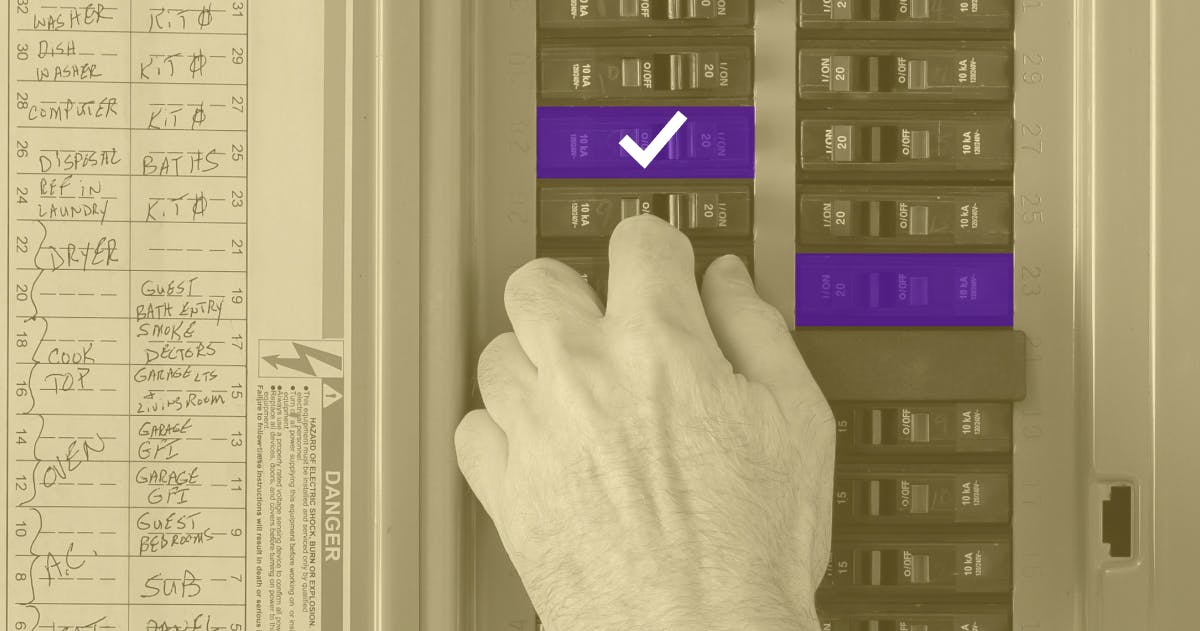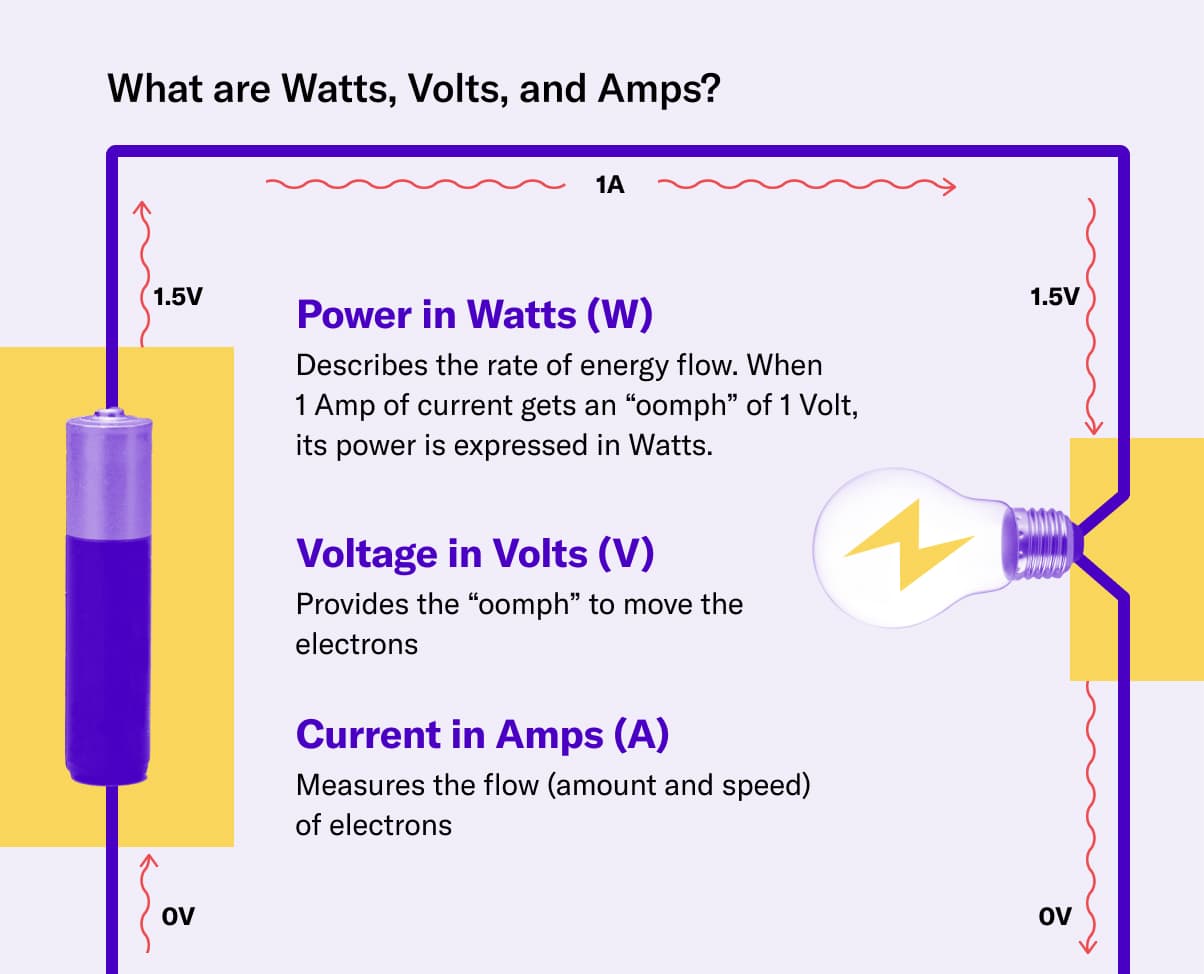How to electrify on a 100 Amp panel
Save yourself time and money with some simple planning

Most homes can fully electrify on an existing 100 Amp electrical panel with some simple planning upfront — without sacrificing any of the benefits of electrification! Read our Pros and cons of a panel upgrade guide to learn more.
Keeping your panel and avoiding a panel upgrade can save thousands of dollars and months of time, making electrification faster and cheaper for you. In most cases, you can still get 100 miles of juice in your car overnight just by plugging it in when you get home. All you need is a plan that consists of power-efficient and right-sized appliances.
Here are the key technologies and appliances that allow you to electrify on a 100 Amp panel:
Power-Smart EV chargers
Standard 240 Volt Level 2 EV chargers use 40 Amps or more of electrical power and provide about 300 miles of charge overnight. Most of us don’t drive 300 miles a day (or 100,000 miles a year!), so selecting a power-smart EV charger is a no-brainer. For example, a Level 2 16 Amp EV charger will provide at least 100 miles of charge a night (36,000 miles per year) — more than enough for the typical driver.
You also can look for a charger that lets you adjust the Amps, and start on a lower setting to see if it meets your needs (while also saving space on your panel). Or, look for a smart EV charger that automatically pauses or modulates charging when a lot of other appliances are running.
Even the 120 Volt Level 1 charger that comes with your EV, which gives you about 50 miles of charge overnight, may be enough for your range needs, and it doesn’t need any upgrades — it just uses a regular wall outlet.

Smart splitters and smart panels
Cool new technology exists that can pause unnecessary circuits to avoid overloading your panel.
Smart splitters (like the splitters from DryerBuddy, SplitVolt, or NeoCharge) are quite simple and low-cost ($400-$700). Some are plug-based and DIY, while others are hard-wired and require an electrician to install. These are best when you are nearly able to fit everything on your existing panel and just need some support for that last device. For example, if your clothes dryer is near where you park your car, you can use a smart splitter to share a circuit between your clothes dryer and EV charger. How often do you need to dry a load of laundry and charge your car at exactly the same time?
Smart panels (like the ones from Span or Koben) are a more expensive solution ($3,000–$5,000 plus installation by a qualified electrician), and they are also the most sophisticated and comprehensive. Smart panels can allow you to manage all of the loads on your electrical panel, which enables you to optimize the use of solar or batteries. For example, if you have a home battery system, you can choose which circuits stay on in a power outage to maximize your back-up power. We wrote a lot more about our love of smart panels here.
15 Amp or 120 Volt heat pump water heaters
Standard heat pump water heaters use 240 Volts and 30 Amps of electrical power, but you can also select a 15 Amp model to free up panel space. If you live in a moderate climate or if your water heater is indoors, new 120 Volt heat pump water heaters may be the easy install solution for you. On top of being power-efficient, these 120 Volt devices don’t need a new circuit, which can save you over $1,000 on installation costs!
As long as you get a water heater that is the right size, you won’t compromise on hot water with a power-efficient choice. If you are happy with your existing water heater, we recommend sizing up by one step when you switch to a 240 Volt heat pump water heater (e.g., 40 gallons → 50 gallons), and by two steps when you switch to a 120 Volt heat pump water heater (e.g., 40 gallons → 65 gallons), just to be sure to get all the hot water you want.
Variable-speed heat pumps
Variable-speed heat pumps (aka “inverter-driven” or “variable-capacity”) make the heating and cooling process more gradual and power-efficient than a traditional system. Unlike a single-speed heat pump, they run at multiple speeds rather than simply having “on” and “off” modes. (Bonus: you’ll also have a more consistent temperature from room to room and throughout the day!)
Heat pump dryers and 120 Volt clothes dryers
Heat pump dryers use much less power and energy to dry your clothes, often requiring only a 240 Volt, 15 Amp circuit — whereas an electric resistance dryer requires a 240 Volt, 30 Amp circuit. 120 Volt condensing combination washer/dryers can be a great choice too, particularly for renters.
A load of laundry might take an hour and a half to dry with a heat pump dryer, or two hours to dry with a condensing electric dryer, relative to an hour with a standard electric resistance dryer.
If you select the power-smart choices in the table below, chances are you will be able to electrify on an existing 100 Amp panel. If you want to run the numbers for yourself, check out Redwood Energy’s Watt Diet Calculator, and Peninsula Clean Energy’s Design Guidelines for Home Electrification.
Finally, talk to your electrician about your plan to confirm that your selected combination of appliances will allow you to electrify while keeping your existing panel.

Learn how to prep your home for electrification with Rewiring America's free electrical panel guide. Check it out.
First, electric upgrades. Then your whole home?
We’ve launched a free tool to help you go all-electric. Make your plan. Maximize your savings. Get help along the way.
Start planning today